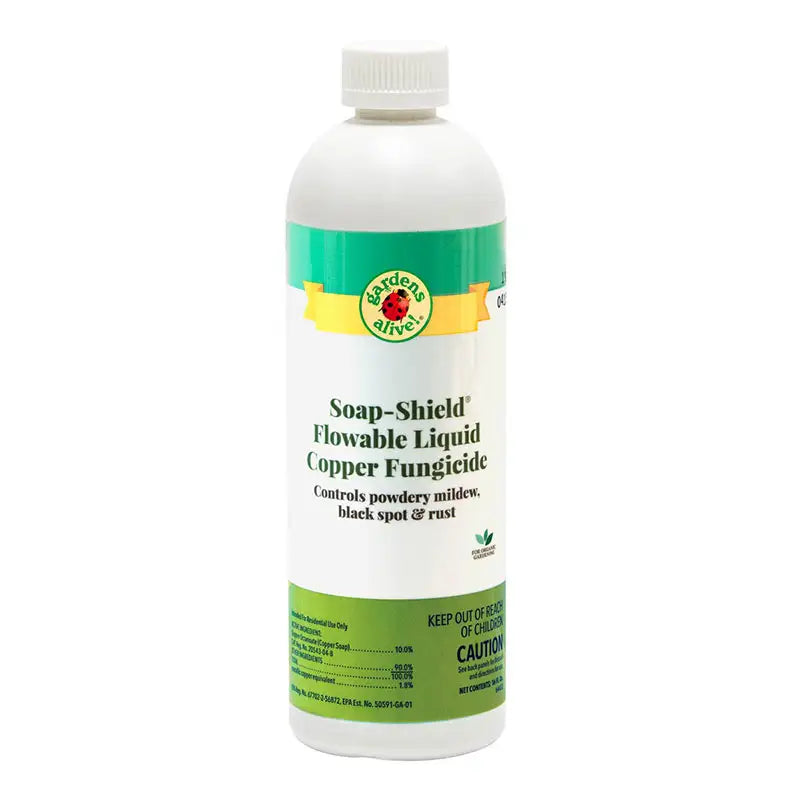Why are my Arborvitae Turning Brown?
Q. Ed from Delaware left us this phone message: "My Emerald arborvitae are starting to die; they're turning brown. What could be the cause of this? I have fifteen of them and five are turning brown."
A. We were originally going to have Ed ask his question on the show, and I figured I would offer my usual answers: wood mulch touching the trunks of the trees, chemical lawn treatments near the trees, poor drainage, trees planted too deep, a nearby neighbor spraying herbicides on a windy day, or sunspots. But we've gotten this question a lot lately and I wondered if something else was afoot. Or a tree.
So I decided to investigate and turn it into a Question of the Week if I found something other than the usual suspects. And did I ever!
It wasn't easy, but I finally located a Bulletin from The University of Massachusetts at Amhurst that told me all about Arborvitae Needle Blight. Anyone who has any type of arborvitae on their property should read this Bulletin.
Anyway, two pathogens are responsible. Both are poorly understood, virtually unpronounceable and at least one was unknown before 1989. (Note: All arborvitae are members of the Thuga family, which is why you'll see variations of this word throughout.
I quote from the Bulletin:
"It's believed that Phyllosticta [phylo-sticta]is the primary species encountered.... This fungus was first described in 1989 and is thought to occur only on Thuja [species]. [But] based on submissions to the University of Massachusetts plant pathology lab, this pathogen can also be found on Leyland cypress (×Cupressocyparis leylandii), false-cypress (Chamaecyparis spp.), Japanese cedar (Cryptomeria) and juniper/red-cedar (Juniperus spp.).
"Infected arborvitae typically have blighted needle tips and/or discolored (pale green to yellow) needles that may appear desiccated. Infections often initiate at the needle tip and progress [inwards]. During wet weather, black pads of fungal tissue rupture through the epidermis on symptomatic needles to release large volumes of spores, which are then blown or splashed onto nearby shoots to initiate new infections.
"Because arborvitae have dense canopies, especially those [that have been pruned for density], ideal conditions exist for development of the pathogen. Most infections are likely [to become established] during wet weather in the spring, when new needles are emerging and not fully developed. However, the pathogen may also be actively sporulating during the autumn season, especially when moisture is abundant...[Overly] aggressive pruning and winter injury are likely the most important stresses that lead to infection.
"The fungus invades the plant at the tips of new shoots or can utilize pruning wounds as a source of entry. Once established, it causes browning and dieback that can eventually kill small branches. Overall, Pestalotiopsis (pronounced Pesta-low-she-opsis) is more aggressive in comparison to Phyllosticta (the other one) because of its ability to attack stems and small branches.
"Phyllosticta is primarily restricted to the needles. Pestalotiopsis is opportunistic and attacks weakened plants predisposed [to infection] by drought, insect feeding, mechanical damage and [planting] stress. The fungus is a known endophyte, meaning that it can live dormant within the plant without causing disease, an adaptation that allows it to readily overwinter in asymptomatic plant tissues.
"Pestalotiopsis produces small pads of fungal tissue underneath the epidermis (bark) of the plant, and when moisture is abundant the pads rupture, producing a long black mass of spores. During wet weather, spores are blown and splashed onto healthy, nearby plant parts, initiating new infection centers.
"The best course of action for management of any needle or shoot blight pathogen is to prune and discard as many infected plant parts as possible. Dead shoots and needles harbor the fungal pathogens and allow them to overwinter in the tree canopy. When they sporulate from the dead tissue the following [Spring], the spores are in very close proximity to newly developing and susceptible tissues.
"On well-established mature trees, this level of pruning can be a daunting task, but a necessary one if the disease is to be successfully controlled. However, it is important to keep in mind that spores travel long distances and both [pathogens] are widespread in the environment. Avoid pruning during wet weather, as this is the time when the fungus is most actively producing and disseminating spores. "Avoid watering with overhead sprinklers that wet the foliage, which allows moisture to linger on the needles, facilitating spore production and germination. Drip irrigation or hand-watering of newly planted trees is preferable."
The author, Nicholas Brazee, goes on to mention the importance of 'cleaning the forest floor' as any infected needles or branches not cleaned up are capable of spreading the fungus. He recommends the ancient organic herbicide copper as a way to prevent or control the disease. Plants should be sprayed in the Spring and Fall, ideally as a preventative before symptoms emerge.
Sunlight is important as well. Although somewhat shade tolerant, these plants do best in full sun. The more shade, the better the chance that these two fungi will thrive. On a more positive note (kind of), the wood of arborvitae is highly rot resistant, and would serve well as lumber for raised beds frames or a compost bin.
So if you DO wind up cutting down any trees...
A. We were originally going to have Ed ask his question on the show, and I figured I would offer my usual answers: wood mulch touching the trunks of the trees, chemical lawn treatments near the trees, poor drainage, trees planted too deep, a nearby neighbor spraying herbicides on a windy day, or sunspots. But we've gotten this question a lot lately and I wondered if something else was afoot. Or a tree.
So I decided to investigate and turn it into a Question of the Week if I found something other than the usual suspects. And did I ever!
It wasn't easy, but I finally located a Bulletin from The University of Massachusetts at Amhurst that told me all about Arborvitae Needle Blight. Anyone who has any type of arborvitae on their property should read this Bulletin.
Anyway, two pathogens are responsible. Both are poorly understood, virtually unpronounceable and at least one was unknown before 1989. (Note: All arborvitae are members of the Thuga family, which is why you'll see variations of this word throughout.
I quote from the Bulletin:
"It's believed that Phyllosticta [phylo-sticta]is the primary species encountered.... This fungus was first described in 1989 and is thought to occur only on Thuja [species]. [But] based on submissions to the University of Massachusetts plant pathology lab, this pathogen can also be found on Leyland cypress (×Cupressocyparis leylandii), false-cypress (Chamaecyparis spp.), Japanese cedar (Cryptomeria) and juniper/red-cedar (Juniperus spp.).
"Infected arborvitae typically have blighted needle tips and/or discolored (pale green to yellow) needles that may appear desiccated. Infections often initiate at the needle tip and progress [inwards]. During wet weather, black pads of fungal tissue rupture through the epidermis on symptomatic needles to release large volumes of spores, which are then blown or splashed onto nearby shoots to initiate new infections.
"Because arborvitae have dense canopies, especially those [that have been pruned for density], ideal conditions exist for development of the pathogen. Most infections are likely [to become established] during wet weather in the spring, when new needles are emerging and not fully developed. However, the pathogen may also be actively sporulating during the autumn season, especially when moisture is abundant...[Overly] aggressive pruning and winter injury are likely the most important stresses that lead to infection.
"The fungus invades the plant at the tips of new shoots or can utilize pruning wounds as a source of entry. Once established, it causes browning and dieback that can eventually kill small branches. Overall, Pestalotiopsis (pronounced Pesta-low-she-opsis) is more aggressive in comparison to Phyllosticta (the other one) because of its ability to attack stems and small branches.
"Phyllosticta is primarily restricted to the needles. Pestalotiopsis is opportunistic and attacks weakened plants predisposed [to infection] by drought, insect feeding, mechanical damage and [planting] stress. The fungus is a known endophyte, meaning that it can live dormant within the plant without causing disease, an adaptation that allows it to readily overwinter in asymptomatic plant tissues.
"Pestalotiopsis produces small pads of fungal tissue underneath the epidermis (bark) of the plant, and when moisture is abundant the pads rupture, producing a long black mass of spores. During wet weather, spores are blown and splashed onto healthy, nearby plant parts, initiating new infection centers.
"The best course of action for management of any needle or shoot blight pathogen is to prune and discard as many infected plant parts as possible. Dead shoots and needles harbor the fungal pathogens and allow them to overwinter in the tree canopy. When they sporulate from the dead tissue the following [Spring], the spores are in very close proximity to newly developing and susceptible tissues.
"On well-established mature trees, this level of pruning can be a daunting task, but a necessary one if the disease is to be successfully controlled. However, it is important to keep in mind that spores travel long distances and both [pathogens] are widespread in the environment. Avoid pruning during wet weather, as this is the time when the fungus is most actively producing and disseminating spores. "Avoid watering with overhead sprinklers that wet the foliage, which allows moisture to linger on the needles, facilitating spore production and germination. Drip irrigation or hand-watering of newly planted trees is preferable."
The author, Nicholas Brazee, goes on to mention the importance of 'cleaning the forest floor' as any infected needles or branches not cleaned up are capable of spreading the fungus. He recommends the ancient organic herbicide copper as a way to prevent or control the disease. Plants should be sprayed in the Spring and Fall, ideally as a preventative before symptoms emerge.
Sunlight is important as well. Although somewhat shade tolerant, these plants do best in full sun. The more shade, the better the chance that these two fungi will thrive. On a more positive note (kind of), the wood of arborvitae is highly rot resistant, and would serve well as lumber for raised beds frames or a compost bin.
So if you DO wind up cutting down any trees...


